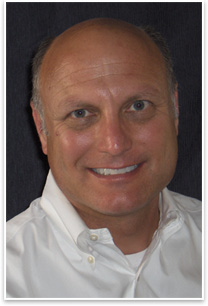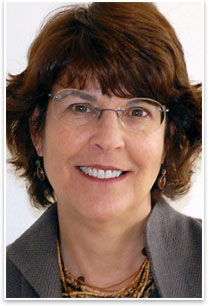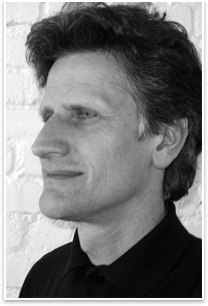navigating
the economy
Consulting Practice Niches Create Shelter for
Architects in a Thorny Economy
Four small-firm consultant business models from Bay Area AIA members
by Zach Mortice
Associate Editor
How do you .
. . adapt
your skills as a designer into architectural consulting?
Does it pay to be nimble, light, and alone these days? As the reeling
economy continues to wreak havoc on the design and construction industry
(2,000
fewer people were working at architecture firms in the month of April
alone) architects are being bounced from their jobs
at traditional design firms and wondering where their skills fit
into the economy’s
seemingly willful refusal to build buildings. Experience from other
sole practitioners and small firms that offer services to architects
and architectural clients suggests that the best business model today
allows architects to use their diverse skills wherever they see fit—plugging
their expertise into hyper-specific micro markets that are too small
for a large firm to work in, yet large enough to keep paying the
bills. Four Bay Area architects have been doing just that, often
after long and familiar experiences with large, traditional design
firms. Though their practices are vastly different, they’ve
all found that the freedom and flexibility of their consulting practices
have allowed them to bob, duck, weave, and advance in a worsening
design market.
 Michael Bernard, AIA Michael Bernard, AIA
Michael Bernard, AIA, has been keeping a foothold in the still-suffering
design and construction industry by addressing elements of architecture
that have long been neglected through design education and practice:
practice management and the running of a design business.
“We never learned about that in school,” he says. “We
learned about how to put a building together in professional practice
and contracts, but never how to run our own business.”
To be sure, Bernard has a deep understanding of how much or how
little architecture higher education programs cover this issue. He’s
an adjunct architecture professor who specializes in professional
practice at the California College of the Arts in San Francisco.
For four years, Bernard has been what he calls a “roving manager” with
his sole proprietor consultant firm Virtual
Practice, where he meets with small architecture firm clients (usually from
1 to 10 people) and teaches them how to make their practice run better.
Bernard had worked in traditional design firms (including a stint
working for AIA Gold Medal recipient Charles Moore), but he naturally
gravitated towards project management. Now, he has no plans to go
back to traditional practice. “This,” he says, “is
what I’m on the planet to do.”
Bernard works with 11 to 15 clients per month, out of a pool of
35 to 40. He spends 60 percent of his time searching for new clients,
but rarely makes cold calls, preferring instead to approach new customers
subtly by having established clients recommend him. The services
he offers are applicable to sole practitioners as well as more robustly
staffed firms. He consults clients on formalizing revenue models,
marketing, and a host of staffing issues like hiring employees, evaluating
them, and writing employee manuals. Bernard also talks to architects
about “strategically managing client expectations” when
clients and their designers run into conflicts.
“I solve problems the same way that an architect would, but
I don’t focus on the building,” he says. “I focus
on the operations and structure of the small firm.”
As all kinds of architecture firms across the nation are shedding
jobs at extraordinary rates, Bernard suggests doing what he’s
done: decoupling his skills (in his case, practice management) from
traditional design business models and taking them directly to the
market. These skills can include everything from rendering to writing
specifications, contracts, or project proposals—any facet that
contributes to the final design product that firms produce. An employee
with such skills who is still employed in a firm, Bernard says, could
easily be farmed out as a consultant to other firms and use their
skills as an extra revenue stream. Thus, these marketable skills
should not be thought of as a part of the knowledge base required
to design a building, but as independent competencies that can be
plugged into the larger design and construction economy at will.
“We have to look beyond what we’re trained to do and
look at what we’ve always been good at and seek the process,” Bernard
says.
 Amy Delson, AIA Amy Delson, AIA
For firms facing laying off staff because of strangled credit markets,
hesitant clients, and plummeting institutional endowments, Amy
Delson, AIA, is a safer hire than most. That’s because her
sole practitioner firm Strategic
Facilities Planning is built to
come and go with the project, in the short to intermediate term.
This Bay Area-based firm works with architects (and their clients)
on programming and planning activities for healthcare facilities
and clinical labs. Delson says her firm is quick and flexible—well
suited to today’s depressed yet rapidly
reorganizing design and construction industry. “The thing
about the work I do is that it enables me to be very nimble,” she
says. “I can both integrate into an architecture firm and
provide the service of lab planning.”
Delson used to run a full service design firm in New Jersey before
moving to California. When she got to the West Coast, she began working
at large firms and took on a programming project for Stanford University.
She established her own firm in 1996, and began working very closely
with Stanford’s in-house planning department and found that
they (and likely other institutional clients) wanted planners who
could become part of their practice for the life of a single project
without have to bring on a large specialty planning firm.
Delson says that architects looking to strike out on their own in
this way have to be ready to network and market their services heavily—at
least initially. “My advice to architects looking to strike
out on their own is to first determine what value you can bring to
other architects or clients, and then network as much as you can,” she
says. “Pro bono work can be part of this networking.”
Now that her business is well established and self sustaining, it
allows her to use time that might have been spent on marketing on
practice research. “If I were a senior-level person in an architecture
office, I would be spending a lot of the time marketing,” she
says. “Because I am relatively self sustaining, I don’t
have to do very much marketing. I get to spend most of my time actually
doing.”
 Mark English, AIA Mark English, AIA
In the initial stages of establishing his consulting firm, Green
Compliance Plus, Mark English, AIA, had quite a similar experience.
To find clients for his energy performance modeling firm, he called
every architecture business listed in a small firm design magazine
published by AIA San Francisco—probably about 200 phone calls
altogether.
“I met with as many as would listen to me, and most would
because I’m not an engineer,” says English, who also
runs a traditional small design firm (Mark
English Architects in
San Francisco). “If they hadn’t heard of me, they
thought, ‘I’d rather talk to an architect who’s
done this rather than another engineer.’”
Green Compliance Plus advises architects on how to meet Title
24, California’s stringent
energy efficiency code for residential and commercial buildings.
Established in 1978 in the wake of the 1970s energy crisis, Title
24 performance regulations are tightened every three years. The next
change will take place on August 1. Much of what English’s
firm does is engineering consulting, but he says his architect clients
prefer getting compliance advice from him rather than engineers because
he won’t “ruin their projects” with inappropriate
design interventions that don’t understand architects’ design
priorities. English had been doing this kind of work with his own
design practice for years, but decided to formalize it as a business
in January with the help of a retired engineer and a technical writer.
Since then, their client base has doubled, adding another layer of
insulation to his bottom line in an already chilly economic climate.
It’s made his business portfolio more diverse, which creates
more opportunities for repeat clients. While most small firms have
to wait for decades for a single client to build another house, English
can sell them energy performance compliance services before their
next design.
The
firm’s Web site is structured as a blog, and contains
original case studies, Q&As,
and tutorials—all meant to foster more conversation on practical
issues about energy efficient design. “I’m not interested
in the pie in the sky,” English says. “I’m only
interested in the in-the-trenches issues architects have to deal
with.”
 Marlene Berkoff, FAIA Marlene Berkoff, FAIA
The sole practitioner consultancy of Marlene Berkoff, FAIA, helps
institutional clients make better decisions about how to address
their facility needs, which is all the more important in today’s
unsettled design and construction marketplace. San Rafael, Calif.-based
Berkoff Facility Strategies consults with institutional
clients (universities, healthcare providers, etc.) very early in
the planning process. She says her job is to help clients get right
the three risk management issues they very often get wrong: how
expensive a building project will be, how long it will take, and
how disruptive it will be to the client’s operations. This
entails walking them through options like acquiring new property,
beginning new construction, or choosing renovations instead.
Berkoff was prepared for this kind of pre-programming cost analysis
by studying economics early in her career. Later, she got an architecture
degree and eventually took on a series of management positions at
large firms. Along the way, she opened the San Francisco Office
of Ellerbe Becket. During this part of her career, the disappointingly
common experience of having clients call her to shut down a project
after revised cost estimates roll in, thus leaving her staff idle
and on the clock, made her wonder what was wrong with her clients’ initial
decision making process and what could be done to improve it.
“[The architects] are doing what the client told them to do,
and the client is basing [their decision] on some erroneous information,” she
says.
Indeed, her business includes advising clients on whether to build
a building at all, and her status as a non-practicing architect
adds to her credibility. She’s not trying to sell a client
on any particular design, but an actual architecture firm hired as
an advisor might. This also means she’s able to focus more
clearly on the clients’ needs and point of view, since she’s
not committed to a particular design strategy. “What is the
client trying to accomplish here?” she says. “It’s
almost never just to build a building.”
Now that she’s been working exclusively with her consulting
business for the last 10 years (Berkoff is in the long stage of semi-retirement
that often stretches on fruitfully and interminably for architects),
she is now able to market herself outside
of the design profession, and set her fees accordingly. |


 Michael Bernard, AIA
Michael Bernard, AIA Amy Delson, AIA
Amy Delson, AIA Mark English, AIA
Mark English, AIA Marlene Berkoff, FAIA
Marlene Berkoff, FAIA